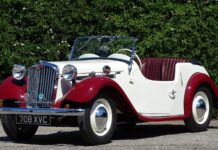HOUSTON, Texas (KTRK) — Beginning in 1936 and for three many years after, New York City postal employee Victor H. Green compiled “The Negro Motorist Green Book,” which later became referred to as just the “Green Book.”

The book turned into a journey manual for African American drivers, a list of locations like eating places, motels, beauty shops, mechanics, and cab groups all through the South that welcomed blacks at some point of racial segregation. It even listed vehicle care recommendations, nearby laws, and prison recommendations if a driver is probably stopped with the aid of regulation enforcement.
Now, the movie “Green Book,” based totally on the real tale of a black musician and his driver touring via Jim Crow-era South, became nominated for 5 Academy Awards at the 2019 Oscars, triumphing Best Picture, Best Original Screenplay, and Best Supporting Actor for Mahershala Ali’s function.
Many of the establishments listed inside the Green Book are shuttered now, but few realize the records of the last places still left standing in major cities like Houston. “We’re in Fifth Ward. This is the primary epicenter of black downtown Houston,” said Toya Levi as she stood before a yellow and purple-painted liquor keep – Ralston’s. It may additionally promote alcohol and spirits now, but the construction was once the only-prevent-keep drugstore that anchored Fifth Ward.
Levi and her husband Reuben are running on The Green Book Project, a web documentary and photo essays and interviews from across the United States, approximately African American reviews. Houstonians, the Levis didn’t understand roughly the Green Book until they took a summertime ride to ride out to Los Angeles in 2006 while racial tensions were high.
“There became lots going on with police brutality, and while we had been out on this ride, a pal of ours cited tow we had been journeying and what changed into going on. It turned into a kind of like visiting for the duration of Jim Crow with the Green Book,” said Toya. The couple dove into learning the Green Book and discovered how motors became freedom machines for black travelers. Still, that freedom changed into limited.
Iconic Texas Southern University professor and debate crew head instruct emeritus Dr. Thomas Freeman recalled the demanding situations of touring with debate crew students to competitions. “We stopped at an eating place in the south — I do not keep in mind what metropolis — however, when I went to the door, they stated we don’t serve blacks here, and in case you want something to consume, you can cross around the again, and we’ll come up with something,” stated Freeman.
More than the Green Book listings, Pastor Emeritus of Houston’s Wheeler Avenue Baptist Church Reverence William Lawson remembered the wword-of-mouthguidelines to belp while traveling. “Segregation becomes just a reality of lifestyles then,” stated Lawson. “We knew there had been certain locations we should move and sure places ie, probably couldn’t cross.” Those who were inclined to journey, Reuben Levi says, helped to build historic neighborhoods like Houston’s Third Ward, Fifth Ward, Acres Homes, and Sunnyside.
“The Green Book, without a doubt, coincided with the magnificent migration,” said Reuben. “A lot of people moved right here because of jobs, and that provided an awesome possibility to help develop a whole lot of those historically black neighborhoods to unprecedented levels.” Only a handful of Green Book establishments, including the ancient Eldorado Ballroom, still stand in Houston Though most of the Green Book records now seem hidden with the enlargement and changing panorama of the metropolis, the Levis says it is a valuable connection to the beyond. “To have four buildings nonetheless standing today, human beings have a connection lower back to the culture of what befell within the past, and we can rejoice in it,” stated Toya and Reuben.


























